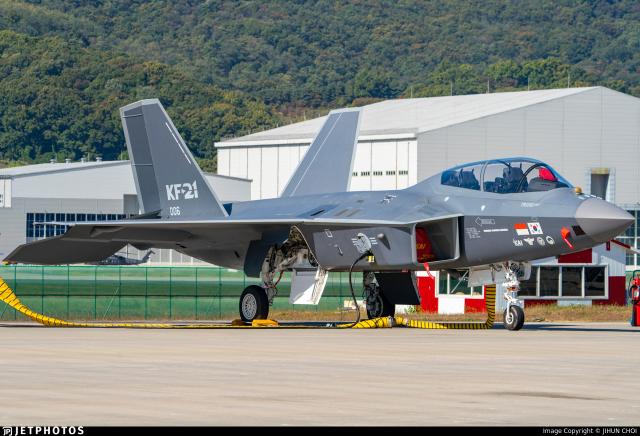 South Korea orders first batch of KF-21 fighters
South Korea orders first batch of KF-21 fighters
On 25 June 2024, Korea Aerospace Industries (KAI) announced that it has signed a USD 1,4 billion deal with the Defence Acquisition Programme Administration (DAPA) to commence production of the next-generation KF-21 Boramae (Hawk) fighter jet.
Under the deal, KAI will produce 20 units of the KF-21 Block I batch and provide follow-up logistics support, technical manuals, and training. The fighters will be delivered to the Dae Han Min Guk Gong Gun (RoKAF, Republic of Korea Air Force) by the end of 2026, with the final aircraft delivered by 31 August 2027. The KF-21 will replace South Korea’s F-4 and F-5 fighters, with the former having retired this month.
Jinseok Song, who works on the firm’s KF-21 programme management team, said that production for Block II, slated for development from 2026 to 2028, will add air-to-ground capabilities and an expanded performance envelope.
Furthermore, it is reported that the KF-21 Boramae is taking shape with plans for three distinct variants: the KF-21 EA, EX, and SA. This diversification strategy aims to bolster South Korea’s airpower and unlock export potential in the global arms market.
Taking the two-seat KF-21B as its baseline, the EA variant will undergo modifications to accommodate a dedicated Electronic Warfare Officer (EWO) station in the rear cockpit. Three Electronic Attack (EA) devices and two Electronic Intelligence (ESM) devices will be integrated into the aircraft, enabling the KF-21 EA to perform a critical escort jamming role. Similar to the US Navy's EA-18G Growler, the KF-21 EA will disrupt enemy ground-based air defense systems using its jamming technology, safeguarding friendly aircraft during missions.
The KF-21 EX variant, also known as Block III, represents the most ambitious iteration, targeting performance benchmarks that rival fifth-generation fighter jets. To achieve this goal, the KF-21 EX will incorporate a significant modification: an internal weapon bay (IWB). This advanced technology offers a significant advantage by minimising the radar signature of the aircraft when weapons are stowed internally. This capability is crucial for achieving true fifth-generation stealth characteristics.
The KF-21 SA caters to the specific needs of potential export customers. While the base specifications will likely closely resemble those of the RoKAF variant, the SA version allows for customisation of weapons and internal equipment to meet individual country requirements. Negotiations with potential buyers like Indonesia are ongoing, but final configurations for export models remain undetermined.
Mass production of the baseline KF-21 is slated to begin in 2026. However, South Korea recognises the importance of continuous development to maintain a competitive edge. The KF-21 programme’s diversification strategy, with the KF-21 EA, EX, and SA variants, reflects this commitment to innovation. This multi-faceted approach will strengthen South Korea’s air defense capabilities while simultaneously opening doors to lucrative export opportunities in the international arms market.
Credit photo: Jihun Choi (via Jetphotos.com)

